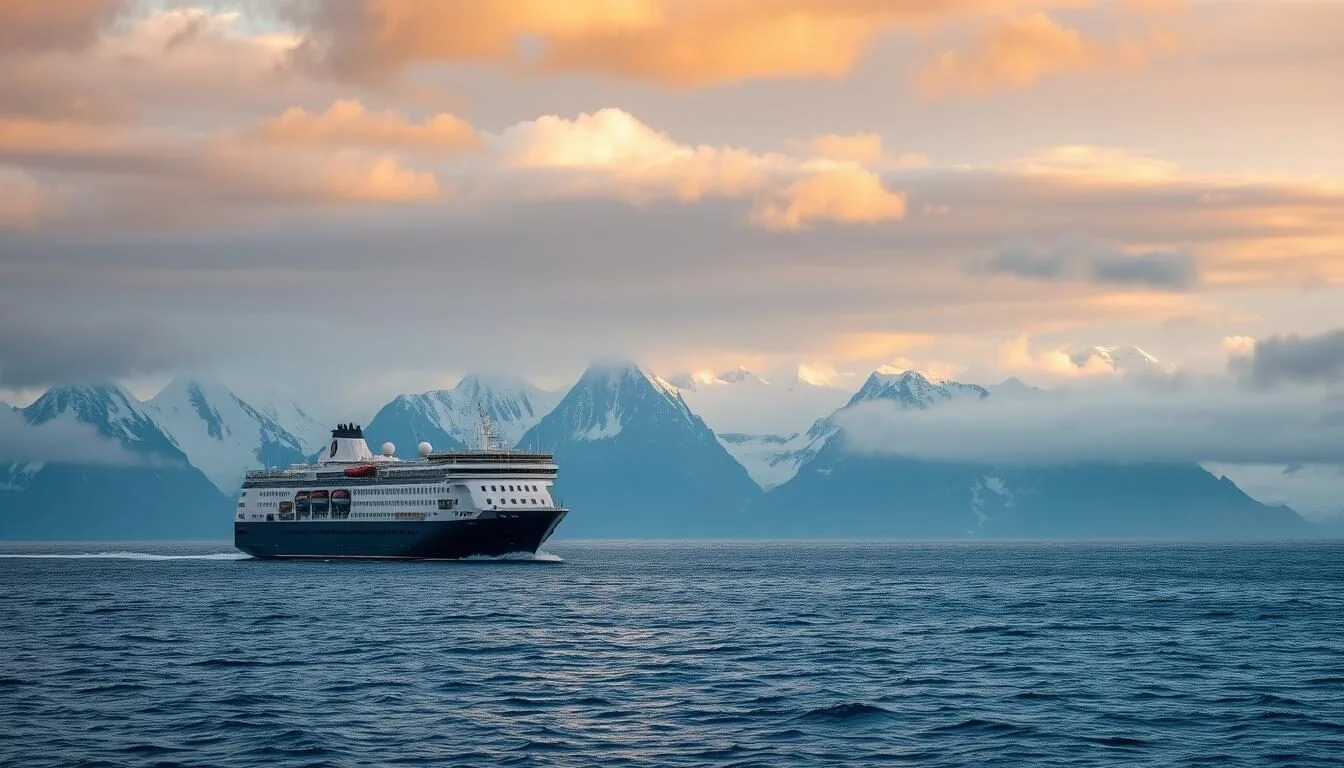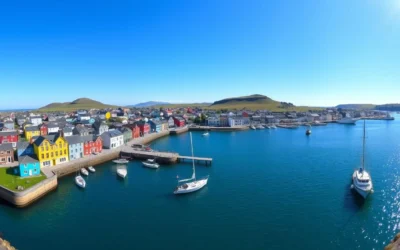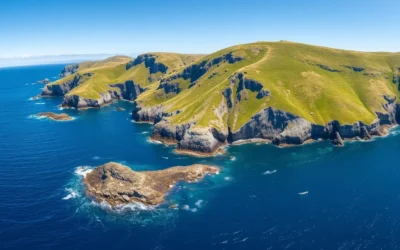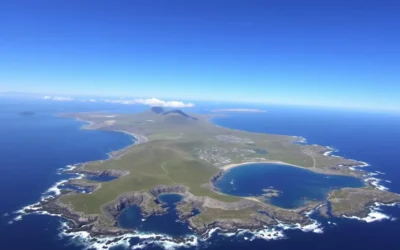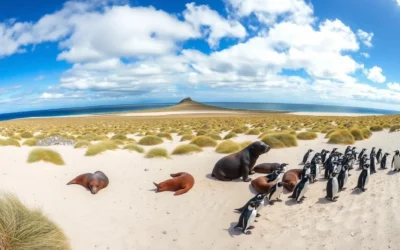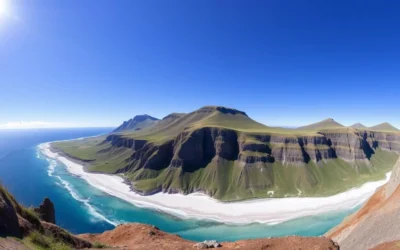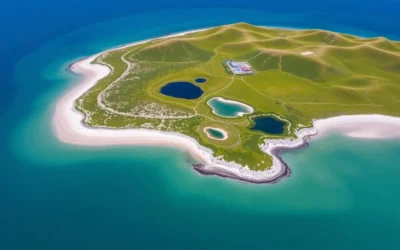Did you know that the remote Falkland Islands are home to more penguins than people? With a human population of just around 3,400, the islands host over one million penguins across five different species. Meanwhile, the nearby South Georgia Island boasts one of the world’s largest king penguin colonies, with over 100,000 breeding pairs at St. Andrews Bay alone. These sub-Antarctic paradises offer some of the most extraordinary wildlife encounters on the planet, all set against dramatic landscapes that few travelers ever get to experience.
Getting There & Planning Your Journey
Reaching these remote islands requires careful planning. The Falkland Islands can be accessed by air via weekly flights from Santiago, Chile (with a stop in Punta Arenas) operated by LATAM Airlines. The Royal Air Force also runs twice-weekly flights from the UK (RAF Brize Norton), though these have limited availability for civilians.
South Georgia Island has no airstrip and can only be reached by sea. Most visitors arrive via expedition cruise ships that depart from Ushuaia (Argentina), Port Stanley (Falklands), or occasionally Punta Arenas (Chile). These voyages typically take 2-3 days to reach South Georgia from the Falklands, crossing the notorious Scotia Sea.
Ready to Start Your Sub-Antarctic Adventure?
Find the best flight options to begin your journey to these remote wildlife havens.
For the most comprehensive experience, consider an expedition cruise that combines both destinations. These typically last 15-22 days and often include Antarctica as well. If time is limited, some operators offer Falklands-only itineraries that can be completed in 8-10 days.
Required Permits
While the Falkland Islands don’t require special permits for general tourism, South Georgia Island has strict visitor regulations. All visitors need a permit issued by the Government of South Georgia and the South Sandwich Islands. Expedition cruise operators typically handle these arrangements for their passengers. Independent travelers must apply directly through the government website at least 60 days before arrival.
Best Time to Visit & Weather Tips
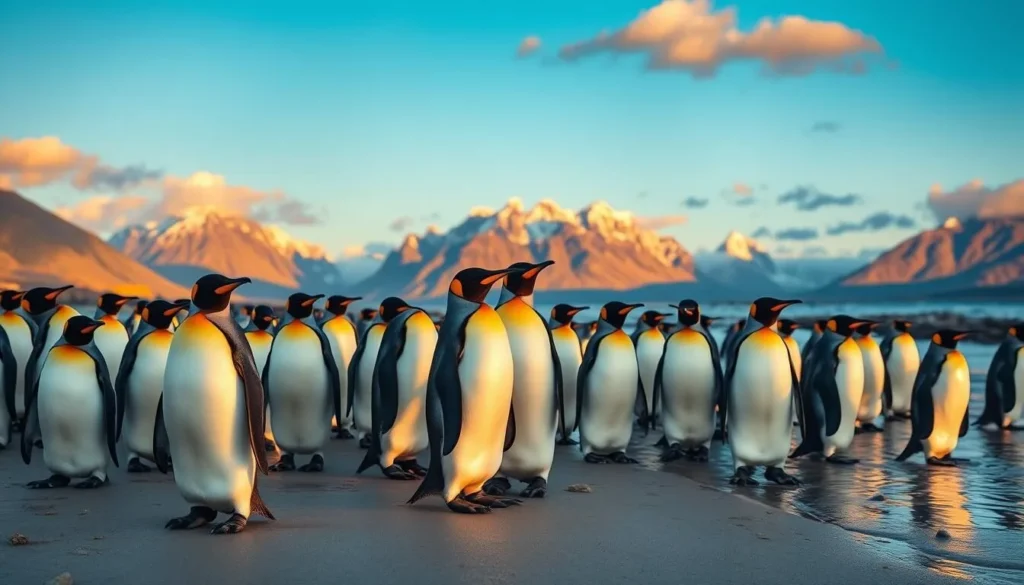
The optimal time to visit both South Georgia Island and the Falkland Islands is during the austral summer (November to February), when wildlife activity peaks and weather conditions are most favorable. However, each season offers unique experiences:
Spring (October-November)
- Breeding season begins
- Elephant seals establish territories
- Wildflowers bloom in the Falklands
- Temperatures: 5-10°C (41-50°F)
- More snow coverage on South Georgia
Summer (December-February)
- Peak wildlife activity
- Penguin chicks hatch and grow
- Longer daylight hours (up to 18 hours)
- Temperatures: 8-15°C (46-59°F)
- Best hiking conditions
Autumn (March-April)
- Fur seal pups are active
- Adult penguins molting
- Fewer visitors
- Temperatures: 4-10°C (39-50°F)
- Dramatic skies for photography
Winter (May-September)
- Very limited access
- Few expedition cruises operate
- Harsh conditions on South Georgia
- Temperatures: -5-5°C (23-41°F)
- Not recommended for tourism
Weather Tip: Conditions can change rapidly in these sub-Antarctic regions. Pack layers, waterproof gear, and be prepared for all weather conditions, even in summer. Wind is a constant factor, with gusts frequently exceeding 50 km/h (30 mph).
Getting Around Locally

Transportation in these remote islands is limited and specialized due to their rugged terrain and protected status.
In the Falkland Islands:
- FIGAS Air Service: The Falkland Islands Government Air Service operates small aircraft between islands and settlements. Flights are often scheduled based on demand rather than following a fixed timetable.
- Rental Vehicles: In Stanley, you can rent 4WD vehicles to explore East Falkland. Roads are limited and mostly unpaved.
- Guided Tours: Local operators offer 4WD tours to wildlife sites like Volunteer Point, which is recommended as the terrain can be challenging.
- Inter-island Ferries: Limited ferry services connect some of the main islands.
On South Georgia Island:
- Zodiac Boats: All landings are made via Zodiac (rigid inflatable boats) from expedition ships.
- Hiking: Once ashore, exploration is on foot. Some sites have marked trails, while others require guided walks to protect wildlife.
- No Public Transportation: There are no public transportation options on the island.
- No Independent Travel: Visitors must be accompanied by authorized expedition staff at all times.
Explore With Expert Guides
Book guided tours with experienced local operators who know the terrain and wildlife hotspots.
Where to Stay
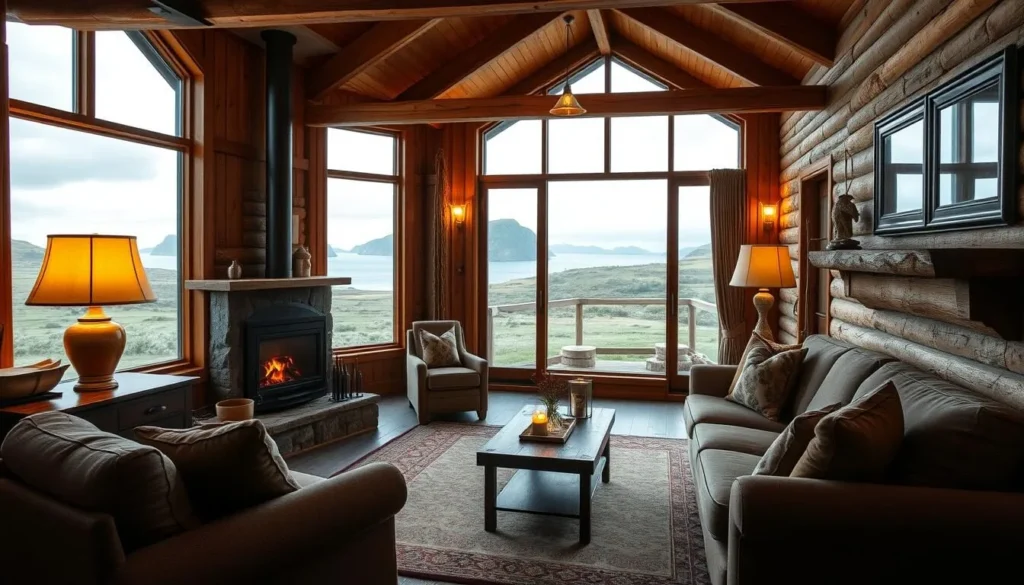
Accommodation options vary significantly between the two destinations, with South Georgia offering no land-based accommodations for tourists.
Falkland Islands Accommodations:
Stanley
The capital offers the widest range of options:
- Malvina House Hotel (upscale)
- Waterfront Hotel (mid-range)
- Lookout Lodge (budget-friendly)
- Several guesthouses and B&Bs
Outer Islands
Rustic but comfortable lodges:
- Sea Lion Lodge (Sea Lion Island)
- Pebble Island Lodge
- Carcass Island Farmhouse
- Port Howard Lodge (West Falkland)
Farm Stays
Authentic Falklands experience:
- Darwin House (near Goose Green)
- North Arm Farm
- Volunteer Point Warden’s House
- Bleaker Island Farmhouse
South Georgia Island:
There are no hotels, lodges, or public accommodations on South Georgia Island. All visitors stay aboard their expedition vessels. These ships range from basic research vessels to luxury expedition ships with amenities like hot tubs, gourmet dining, and spacious cabins.
Booking Tip: Accommodations in the Falklands are limited and fill up quickly during peak season (November-February). Book at least 6-12 months in advance, especially for the more remote island lodges.
Find Your Perfect Stay
Book accommodations in the Falkland Islands or secure your cabin on an expedition cruise.
Dining & Local Cuisine

The culinary experience in these remote islands combines British influences with locally sourced ingredients, particularly seafood and lamb.
Falkland Islands Cuisine:
- Upland Goose: A traditional game dish, though now protected and less commonly served.
- Diddle-dee Berry Jam: Made from local berries that grow wild across the islands.
- Falklands Lamb: Renowned for its quality due to the natural, free-range grazing.
- Smoko: The local tradition of tea with homemade cakes and biscuits.
- Seafood: Fresh catches including Falklands calamari, mullet, and toothfish.
Where to Eat in Stanley:
- Malvina House Restaurant – Fine dining with local ingredients
- Waterfront Kitchen Café – Casual dining with harbor views
- The Victory Bar – Traditional pub fare and local beers
- Shorty’s Diner – American-style comfort food
South Georgia Island:
All meals on South Georgia are provided aboard your expedition vessel. Most ships pride themselves on high-quality cuisine despite the remote location. Some expedition cruises incorporate local ingredients when possible and may serve special themed meals related to the region’s history.
Dining Tip: In the Falklands, island lodges typically offer full-board arrangements with home-cooked meals using local ingredients. These often need to be arranged in advance as there are no restaurants outside of Stanley.
Attractions, Sightseeing & Activities
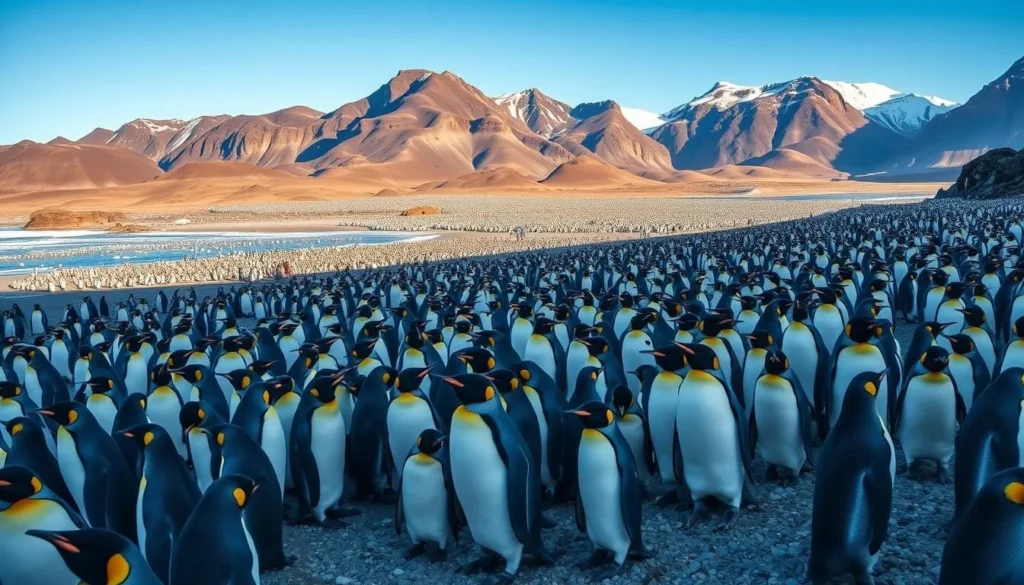
Both destinations offer extraordinary natural attractions, with wildlife viewing as the primary draw. Here are the must-see locations and experiences:
Top Attractions in South Georgia Island:
St. Andrews Bay
Home to the island’s largest king penguin colony with over 100,000 breeding pairs. The sight (and sound) of this massive colony against the backdrop of glaciers and mountains is unforgettable.
Grytviken
The main settlement and former whaling station. Visit the South Georgia Museum, the historic Norwegian church, and pay respects at Ernest Shackleton’s grave.
Gold Harbour
A scenic bay with king penguins, elephant seals, and hanging glaciers. Often described as one of the most beautiful spots in the sub-Antarctic.
Salisbury Plain
Another massive king penguin colony with beautiful mountain backdrops and abundant fur seals along the beaches.
Fortuna Bay
Walk the final leg of Shackleton’s historic crossing, from Fortuna Bay to Stromness, retracing his legendary journey.
Drygalski Fjord
A dramatic fjord on the southeastern end of the island, with steep cliffs and cascading glaciers.
Top Attractions in the Falkland Islands:
Volunteer Point
The largest accessible king penguin colony in the Falklands, with over 1,000 breeding pairs. Also home to gentoo and Magellanic penguins.
Saunders Island
Known for “The Neck,” a narrow isthmus where four penguin species can be seen: king, gentoo, Magellanic, and rockhopper.
Carcass Island
A predator-free island with abundant birdlife, including the endemic Cobb’s wren and thriving penguin colonies.
West Point Island
Home to a spectacular black-browed albatross colony nesting alongside rockhopper penguins on dramatic cliffs.
Stanley
The capital offers the Historic Dockyard Museum, Christ Church Cathedral with its whale bone arch, and colorful corrugated-iron houses.
Sea Lion Island
The best place to observe southern elephant seals and orcas that patrol the coastline hunting for seals.
Experience Wildlife Wonders
Book guided wildlife tours and activities with expert naturalists.
Museums, Cultural Spots & Historical Sites
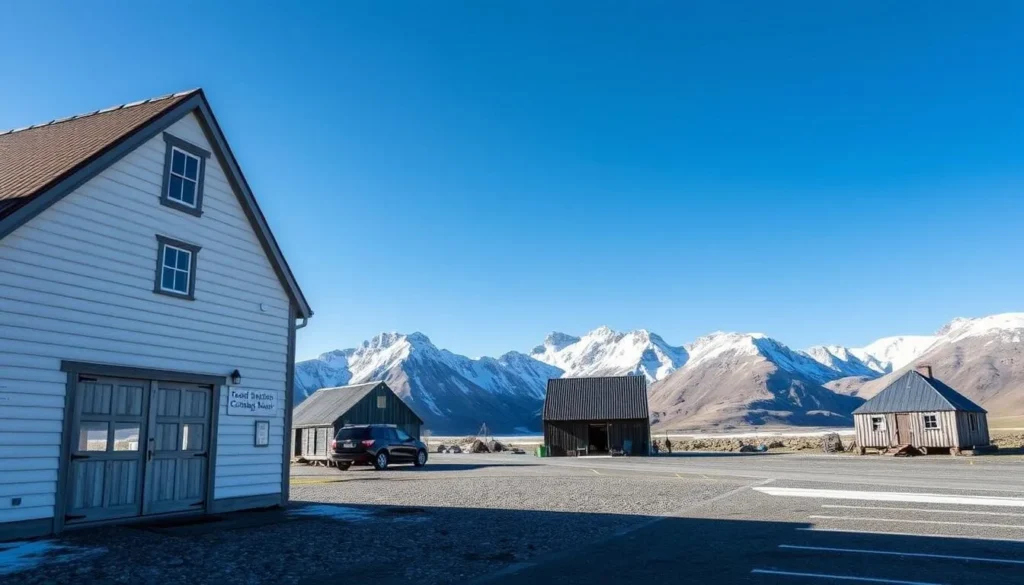
Despite their remote locations, both destinations offer fascinating historical and cultural sites that tell the story of human endeavor in these challenging environments.
South Georgia Island:
- South Georgia Museum: Housed in the former whaling station manager’s villa at Grytviken, the museum showcases the island’s natural history, whaling heritage, and exploration history.
- Shackleton’s Grave: The final resting place of Sir Ernest Shackleton at Grytviken cemetery. Visitors traditionally toast “The Boss” with a shot of whiskey.
- Abandoned Whaling Stations: Stromness, Leith, and Husvik offer glimpses into the industrial whaling past (viewed from a safe distance due to structural dangers).
- Norwegian Church: The restored church at Grytviken, built in 1913, stands as a reminder of the Norwegian whaling community.
Falkland Islands:
- Historic Dockyard Museum: In Stanley, this excellent museum covers the islands’ natural history, maritime heritage, the 1982 conflict, and Antarctic connections.
- Christ Church Cathedral: The southernmost Anglican cathedral in the world, featuring a whalebone arch made from the jawbones of two blue whales.
- 1982 War Memorials: Various sites commemorate the Falklands War, including the Liberation Monument in Stanley and battlefields like Goose Green and Mount Longdon.
- Bluff Cove Museum: A small museum focused on farm life and local wool production, located near the Bluff Cove penguin colony.
- Government House: The governor’s residence in Stanley, built in 1845, is one of the islands’ oldest buildings.
Wildlife, Nature & Outdoor Experiences
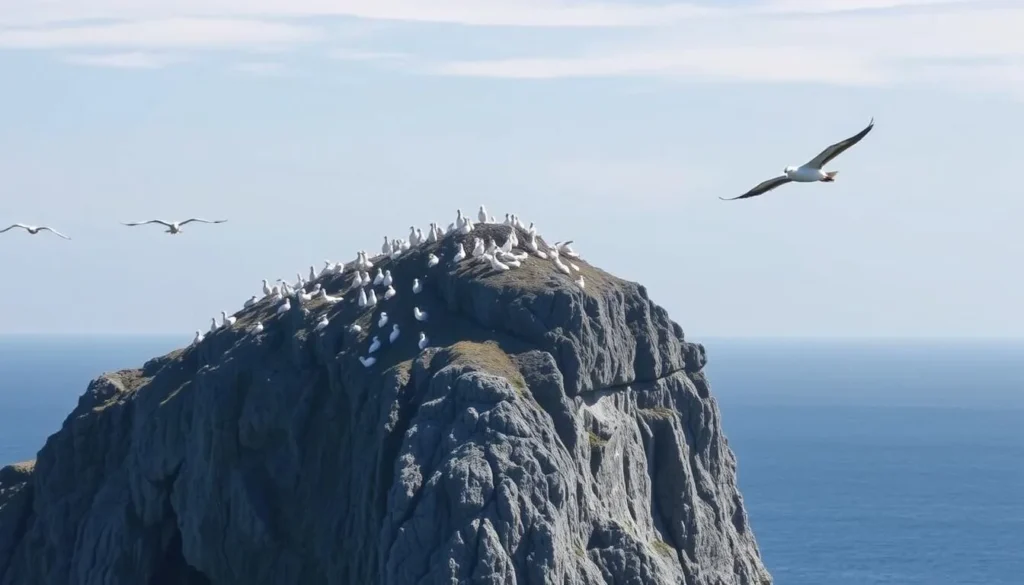
Wildlife viewing is the primary reason most travelers visit these remote islands. The diversity and abundance of animals, particularly seabirds and marine mammals, is truly extraordinary.
Wildlife Highlights:
Penguins
- King Penguins: Massive colonies on South Georgia; smaller groups in the Falklands (Volunteer Point)
- Gentoo Penguins: Common throughout both destinations
- Rockhopper Penguins: Distinctive crested penguins found on cliff areas
- Macaroni Penguins: Primarily on South Georgia
- Magellanic Penguins: Burrowing penguins common in the Falklands
Seals
- Southern Elephant Seals: The world’s largest seal species, with dramatic breeding behavior
- Antarctic Fur Seals: Abundant on South Georgia beaches
- South American Sea Lions: Found in the Falklands
- Leopard Seals: Occasionally spotted around South Georgia
Seabirds
- Wandering Albatross: The largest wingspan of any bird, nesting on South Georgia
- Black-browed Albatross: Large colonies in the Falklands
- Giant Petrels: Impressive scavengers found throughout
- Striated Caracara: Rare bird of prey in the Falklands
- Cobb’s Wren: Endemic to the Falklands
Marine Life
- Orcas (Killer Whales): Hunt seals around coastlines
- Humpback Whales: Common in summer months
- Commerson’s Dolphins: Distinctive black and white dolphins in the Falklands
- Peale’s Dolphins: Often seen around the Falklands
Outdoor Activities:
- Hiking: Follow in Shackleton’s footsteps on South Georgia or explore the rolling hills of the Falklands.
- Photography: Both destinations offer world-class wildlife photography opportunities.
- Kayaking: Some expedition cruises offer guided kayaking excursions (weather permitting).
- Zodiac Cruising: Explore coastlines, icebergs, and wildlife from small boats.
- Mountaineering: Advanced expeditions can arrange specialized mountaineering trips on South Georgia (permits required).
Explore by Sea
Book an expedition cruise to experience the incredible wildlife of South Georgia and the Falklands.
Safety, Etiquette & Local Customs
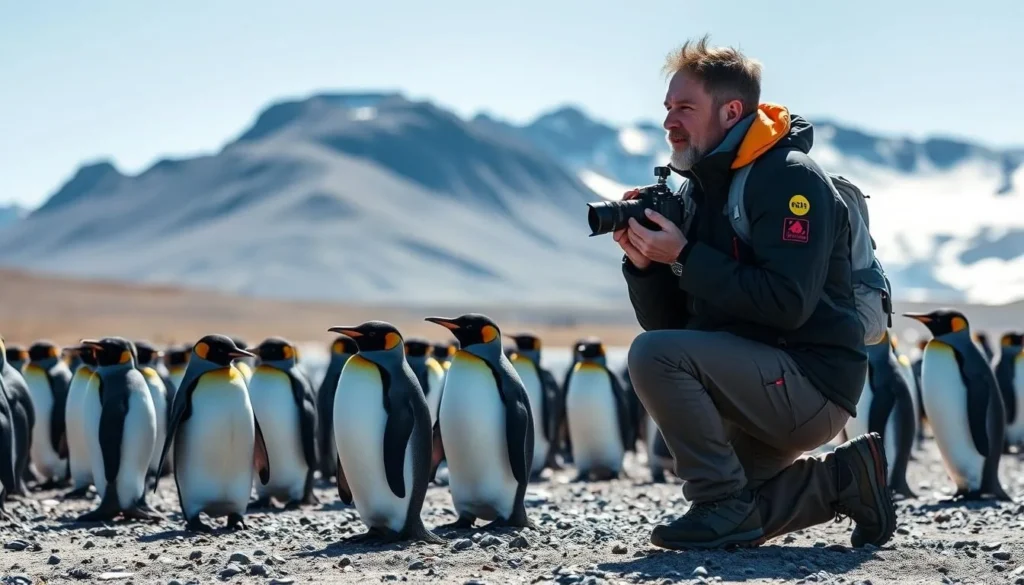
Visiting these remote islands comes with responsibilities toward wildlife conservation and respect for local communities.
Wildlife Viewing Guidelines:
- Maintain a minimum distance of 5 meters (16 feet) from wildlife (10 meters/33 feet for king penguins and nesting birds).
- Always give animals the right of way and never block their access to the sea.
- Avoid making loud noises or sudden movements around wildlife.
- Never feed wildlife under any circumstances.
- Follow the “Leave No Trace” principles – take nothing but photographs, leave nothing but footprints.
Biosecurity Measures:
Important: Both destinations have strict biosecurity protocols to prevent the introduction of non-native species. Before landing, you’ll need to clean all outerwear, backpacks, and equipment (especially Velcro, pockets, and boot treads). Staff will inspect gear before each landing.
Falklands Local Etiquette:
- Always ask permission before entering private land (most of the Falklands is privately owned).
- Close all gates behind you when crossing farmland.
- The Falklands War (1982) remains sensitive – be respectful when discussing it.
- Tipping is not expected but appreciated for exceptional service (10-15%).
- In Stanley, greet locals you pass on the street – it’s considered polite.
Safety Considerations:
- Weather can change rapidly – always carry extra layers, even on sunny days.
- There are no search and rescue services on South Georgia – always follow guide instructions.
- Medical facilities are limited in the Falklands and non-existent on South Georgia. Comprehensive travel insurance with emergency evacuation coverage is essential.
- Male fur seals can be aggressive during breeding season – maintain extra distance.
- Be aware of wildlife hazards like elephant seal wallows and nesting birds.
Practical Travel Tips
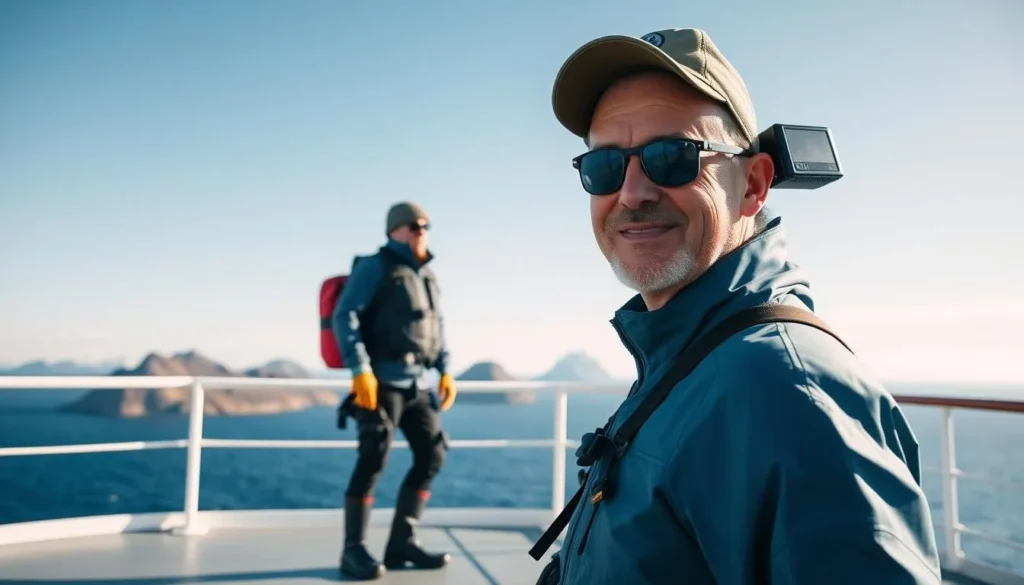
These practical tips will help you prepare for a comfortable and rewarding journey to these remote destinations.
What to Pack:
- Layers: Waterproof outer layers, fleece mid-layers, thermal base layers
- Footwear: Waterproof hiking boots and rubber boots (often provided on cruises)
- Accessories: Waterproof gloves, warm hat, neck gaiter, sunglasses, sunscreen
- Photography: Extra batteries, memory cards, lens cleaning supplies, waterproof camera bag
- Backpack: Small waterproof daypack for landings (10-20 liters)
- Medication: Personal prescriptions plus seasickness remedies
Communications:
- The Falklands has limited mobile coverage in Stanley only (Sure network).
- Internet is available in Stanley but expensive and slow.
- South Georgia has no public communications infrastructure.
- Expedition ships often offer satellite internet at premium rates.
- Inform family and friends that you’ll have limited contact during your journey.
Money Matters:
- The Falkland Islands pound (FKP) is at par with the British pound (GBP).
- British pounds are accepted throughout the Falklands.
- There’s one ATM in Stanley at the Standard Chartered Bank.
- Credit cards are accepted at larger establishments in Stanley but rarely elsewhere.
- South Georgia has no commercial facilities – all expenses are covered on your ship.
- Bring cash for souvenirs at the South Georgia Museum and for gratuities.
Ready for Your Sub-Antarctic Adventure?
Start planning your journey to these remarkable wildlife havens.
Conclusion

South Georgia Island and the Falkland Islands offer some of the most extraordinary wildlife experiences on the planet. From the massive king penguin colonies of St. Andrews Bay to the black-browed albatross cliffs of West Point Island, these remote destinations reward intrepid travelers with natural spectacles few ever witness.
While reaching these sub-Antarctic gems requires effort and planning, the memories of walking among thousands of penguins, watching elephant seals battle on pristine beaches, or following in Shackleton’s footsteps across South Georgia’s mountains will stay with you forever. These islands represent nature at its most wild and wonderful—a true bucket-list journey for wildlife enthusiasts, photographers, and adventurers alike.
Are you ready to embark on your own sub-Antarctic adventure? The penguins, seals, and albatrosses await your arrival in these remarkable outposts of wilderness.
The above is subject to change.
Check back often to TRAVEL.COM for the latest travel tips and deals.
